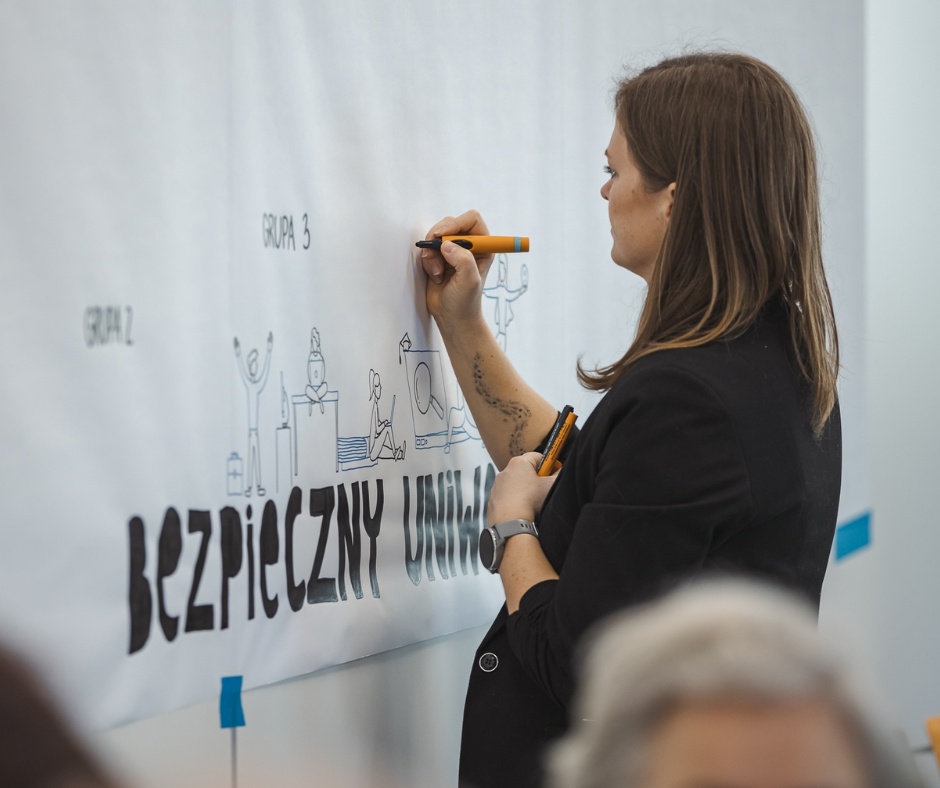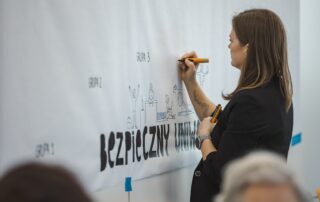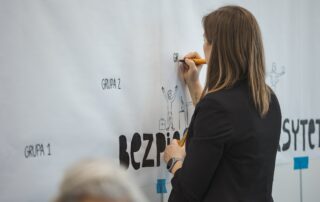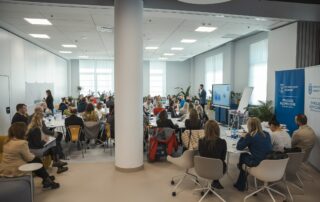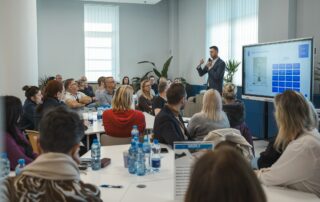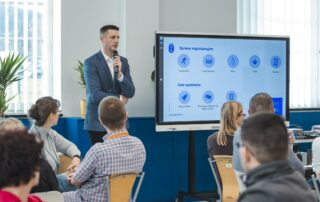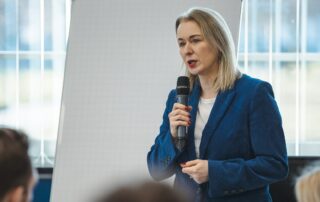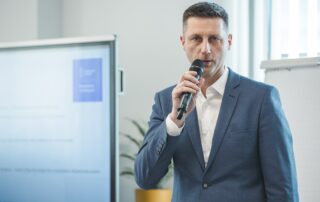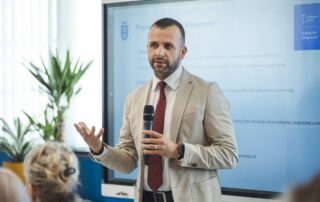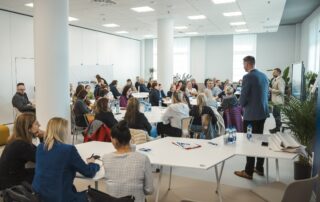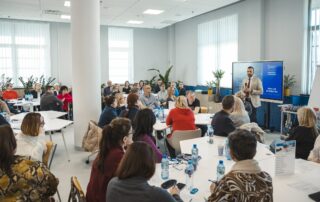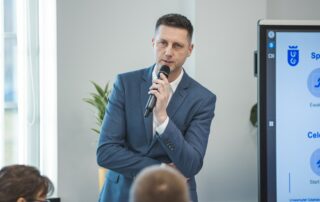Building a culture of safety together – this is the most important objective (and also the challenge) of the ‘Safe University’ programme, which is part of our university’s strategy on safety issues. The first step towards this goal was a workshop meeting at the university’s Welcome Centre on 28 January this year. Representatives from different groups of the UG academic community were invited to participate in the workshop, which selected key values related to health and safety. The UG Centre for Sustainability was a partner of the event.
Fot. Alan Stocki
“This is probably the first time in the history of such a serious document as the UG Strategy that we have had the issue of safety and the quality of risk management singled out at the level of a strategic objective,’”said the Pro Vice-Chancellor for Development and Finance, Paweł Antonowicz, PhD, DSc, Professor UG, when asked to open the meeting. He thanked the Head of the Occupational Safety and Health Office, Tomasz Klawikowski, for his initiative during the building of the UG strategy and expressed his pleasure at the launch of the Safe University series of activities.
“We are aware of how important a sense of safety, comfort and “well-being ” is for all University of Gdansk employees,” said Sylwia Mrozowska, PhD, DSc, Professor UG, Director of the UG Centre for Sustainable Development. She stressed that one of the aims of the meeting was to learn the perspectives of different groups of employees in order to ensure the best possible working conditions and well-being when carrying out tasks in line with the UG strategy.
Tomasz Klawikowski, the workshop leader, discussed the idea behind the meetings and presented a number of measures implemented so far: from the standardisation of health and safety procedures to initiatives related to promoting health and safety knowledge and awareness, such as the health and safety conference or the health programmes implemented at the UG. He listed the two most important strategic goals related to safety: one is to build awareness and knowledge of OSH, and the other is to evaluate the safety policy at the University of Gdansk. What Tomasz Klawikowski would like to strive for is an organisation in which employees apply safety rules because they want to, not because they have to. At the same time, the presenter drew attention to the challenge of the huge diversity of the university environment. This is why representatives from different parts of the university community were invited to the workshop.
“Many organisations only start to build a culture of safety in the face of a disaster,” noted Tomasz Klawikowski. “We, on the other hand, have the comfort of acting without such pressure. We can consciously decide: yes, we want to develop a culture of safety at the University of Gdańsk from today.”
Participants speak positively about the workshop: “I appreciate the involvement of employees in processes to improve working conditions. I am curious to see where this will lead,” said Małgorzata Sokołowska from the Project Implementation Support Office. When asked about areas for improvement in the future, she pointed to the need for a common place to communicate needs between departments. “I found the meeting itself very positive. I am also interested in further training.”
The core subject of the workshop was the identification – while working in teams – of health and safety values important from the participants’ point of view. The results of the participants’ work were visualised by a graphic designer. A plan was also presented for further activities related to the ‘Safe University’ project, including – in addition to workshop meetings – the creation of a website, training courses or competitions. This is the first and important, but certainly not the last, step towards building a culture of safety at the University of Gdańsk.
Karolina Żuk-Wieczorkiewicz/CKiP UG


